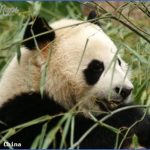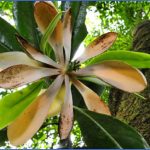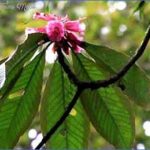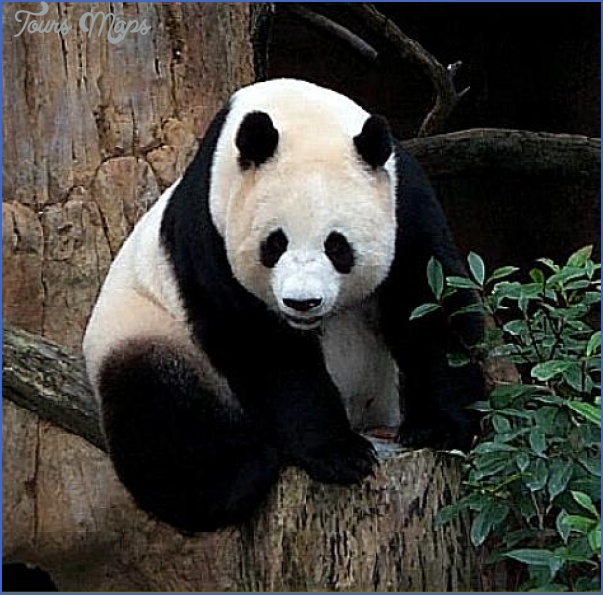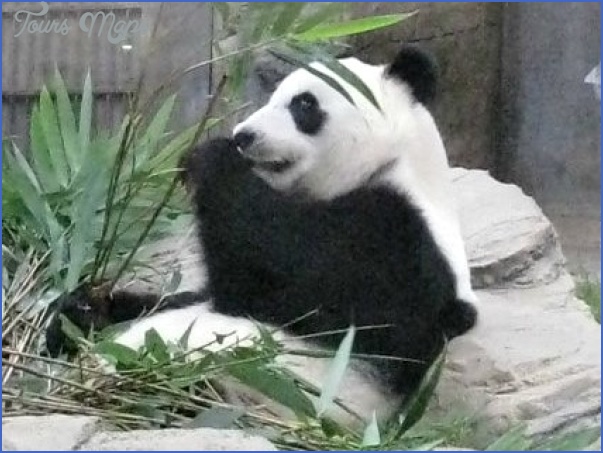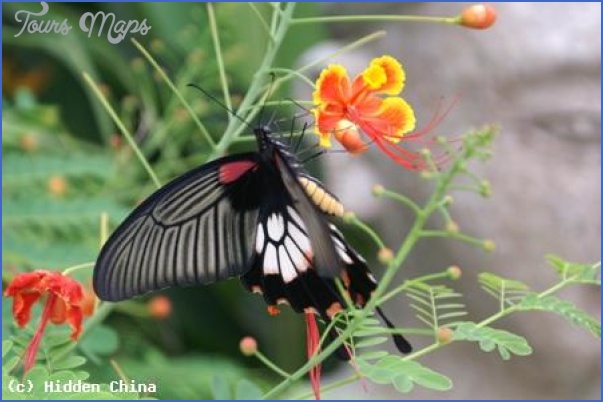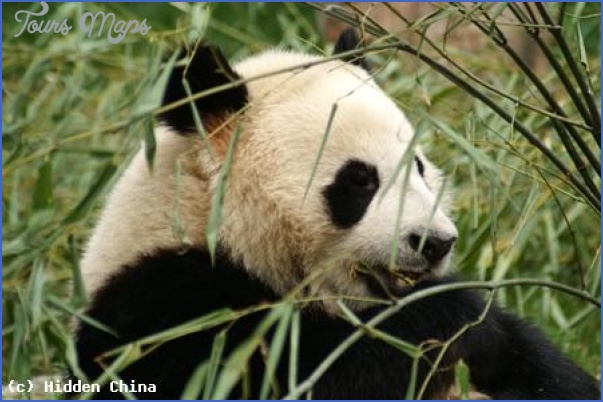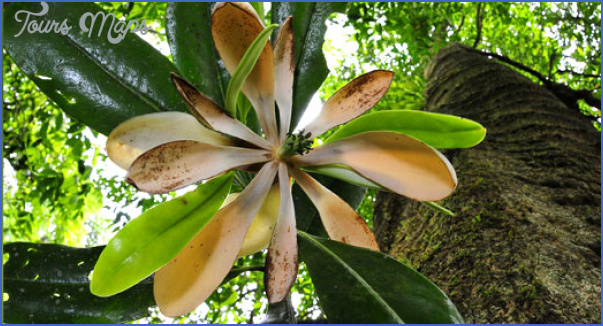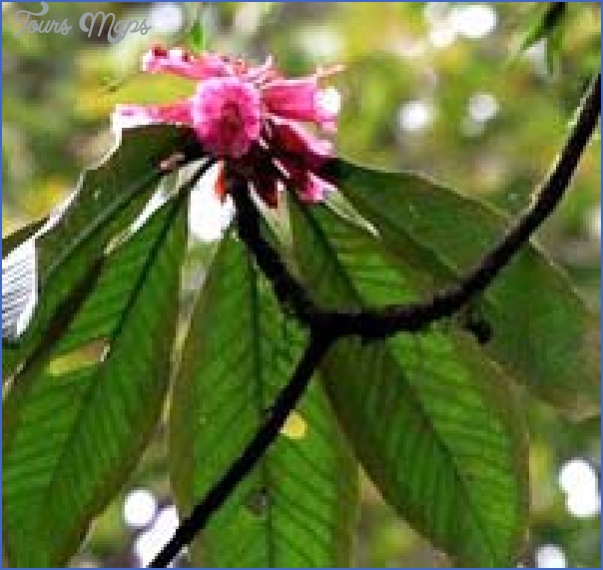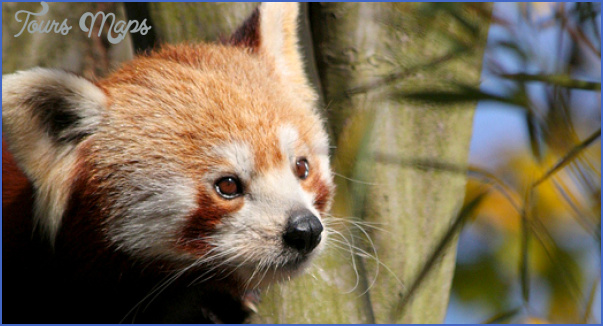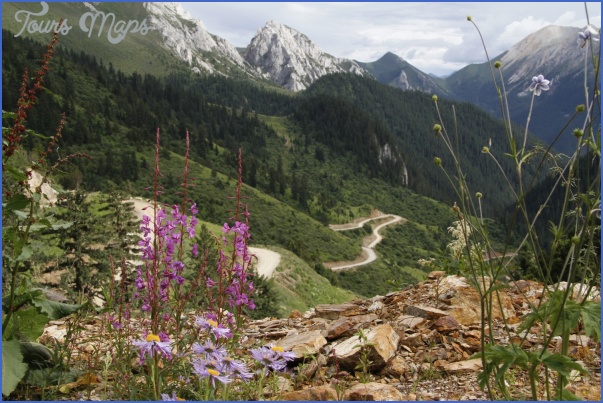General China’s many different geological formations, varied river catchment areas and regions with individual micro-climates have, not surprisingly, led to the evolution of a rich flora and fauna. This is particularly the case in the north-eastern forests, in the steppes of the north and north-west, the Tibetan Highlands and glaciers and also in the tropical and subtropical districts of the south-east.
The enormous range of flora and fauna to be found in China is extraordinary. Almost all species of plants and flowers grow here.
Forests With its varied climatic conditions China is home to most main types of woodland. Pine forests and many examples of deciduous woodlands grow in the north and tropical rainforests flourish in the south. Over 2800 species of trees have been recorded and many are of commercial importance, such as the tung oil trees, cedars, rubber and cocoa trees. Woodland and forest accounts for about 13%’of China’s land surface.
In the north-east there are extensive forests of conifers (larches, firs and pines) and also deciduous woodland (maple, birch, linden and ash). Wildlife includes elks, deer, Siberian tigers and Amur leopards.
The ginseng (renshen), a small plant with red berries, is also a native to this part of China. Its roots are valued the world over and are in great demand. Sometimes described as the “elixir of youth” it is taken widely as a tonic but it is also used as a remedy for pulmonary complaints and hyperglycaemia, a complaint affecting blood sugar levels.
In Shandong province there are oak forests and further south along the lower and middle reaches of the Changjiang and in Sichuan, subtropical evergreens flourish.
In the tropical rainforests, which extend into Yunnan and Guangdong, bananas, lychees, mangoes, coffee and sugar cane are cultivated. This region is home to a wide range of animal species with numerous types of birds, monkeys, tree shrews, tigers, elephants, muntjac deer, Tibetan cats and leopards.
The steppes extend across the north-eastern plain and the eastern part of Inner Mongolia. Camels, pheasants, hares, eagles, weasels, foxes, bears, lynx, deer, mountain goats and wolves are just a few of the species of game and predatory mammals which inhabit these barren wastes.
The provinces of Xinjiang, Gansu and the Quaidam Basin in Qinghai province contain sand and rock deserts, where only low-growing shrubs will grow. The desert regions of north-west Tibet at 5000m/16,000ft will also only sustain small shrubs and bushes.
The West Chinese Highlands in north-west China reach a height of 5000m/16,000ft but creepers and climbing plants survive here. Tibet, the world’s highest region, is subject to one of the harshest climates and huge seasonal variations in temperature. Mountain vegetation characterises the Tibetan Plateau and beyond into Yunnan and Sichuan province. This isthe habitat of the yak, a shaggy-haired member of the ox family, which is used for milk, leather and as a beast of burden.
In the Himalaya region rare mammals include the Asiatic wild ass, wild yak and the Orongo antelope. The mountains of central China provide habitats for other typically Chinese creatures such as the giant panda, Himalayan black bear, lesser panda, serau (chamois), takin, snub-nosed langur and the clouded leopard.
China has a total of 1160 bird species, more species than any other country in the world. Many of these fall into the pheasant and chicken category of which the best known is the common pheasant. Other varieties include partridge, grouse, rock partridge, Franklin’s gull, great bustard and little bustard and the hazel hen. Bamboo partridges and miniature quails are kept as cage birds.
A wide range of waterfowl can also be seen. The colourful mandarin duck is one of the best known examples. Nearly all crane species are now protected. Some time ago, a bird measuring only 1cm/1/2in. was found in southern China. The Chinese nightingale, or sun bird as the Chinese call it, is the smallest bird in the world.
Found only in the waters of the Changjiang, one of the rarest species in China is the Chinese dolphin. There are very few rivers in the world where freshwater dolphins can be found. Another protected species also found in the Changjiang is the Chinese alligator, which can grow to 2m/6l ft.
The white-lipped Thorold’s deer was at one time under threat but now survives in a protected reserve. It lives on the Tibetan Plateau at altitudes of 3000 to 4000m/10,000 to 13,000ft.
Of the 520 recorded varieties of bamboo, 300 grow in tropical and subtropical China. The extent of the bamboo forests has declined in recent years, but they still occupy a total of 2% of the country’s wooded terrain. Found almost as high up as the snow line, the bamboo is of immense importance as a commercial crop. Often a favourite subject in Chinese painting, it has become a symbol for this region of the country. It is used for building ships, houses, furniture and musical instruments. Even in the kitchen, shoots, seeds and pulp have their uses. It is also the main source of food for the giant panda (see Baedeker Special on page 34).
A number of other plants have acquired a special symbolic value in Chinese culture, economy and tradition. For Buddhists the lotus flower has come to symbolise birth, life, fertility, justice and nirvana. It is edible and is used to make medicines and cosmetics.
The peach is another plant which acquired special status. It was cultivated throughout China and became a Taoist symbol. The peony, a favourite flower for the Chinese, features in ancient erotic literature and art and came to symbolise woman.
The tea plant, however, is of even greater importance to China, and its dried leaves have become the national drink of the Orient and beyond. Tea grows in the moist and misty climate of the tropical regions to the south and south-east and will thrive up to an altitude of 2000m/6500ft.
Rice, another vital crop for the Chinese, has been cultivated since the 3rdc. b.c. and rice paddy fields now occupy a high proportion oftheflat
Bamboo Traditional plants Tea Rice land in “inner” China. In a warm, humid climate and with plenty of water at hand, sometimes three crops can be harvested each year. In the hillier regions, rice is cultivated in specially-dug terraces.
China’s Flora and Fauna Photo Gallery
Maybe You Like Them Too
- The Best Cities To Visit in The World
- World’s 10 Best Places To Visit
- Coolest Countries in the World to Visit
- Travel to Santorini, Greece
- Map of Barbados – Holiday in Barbados




